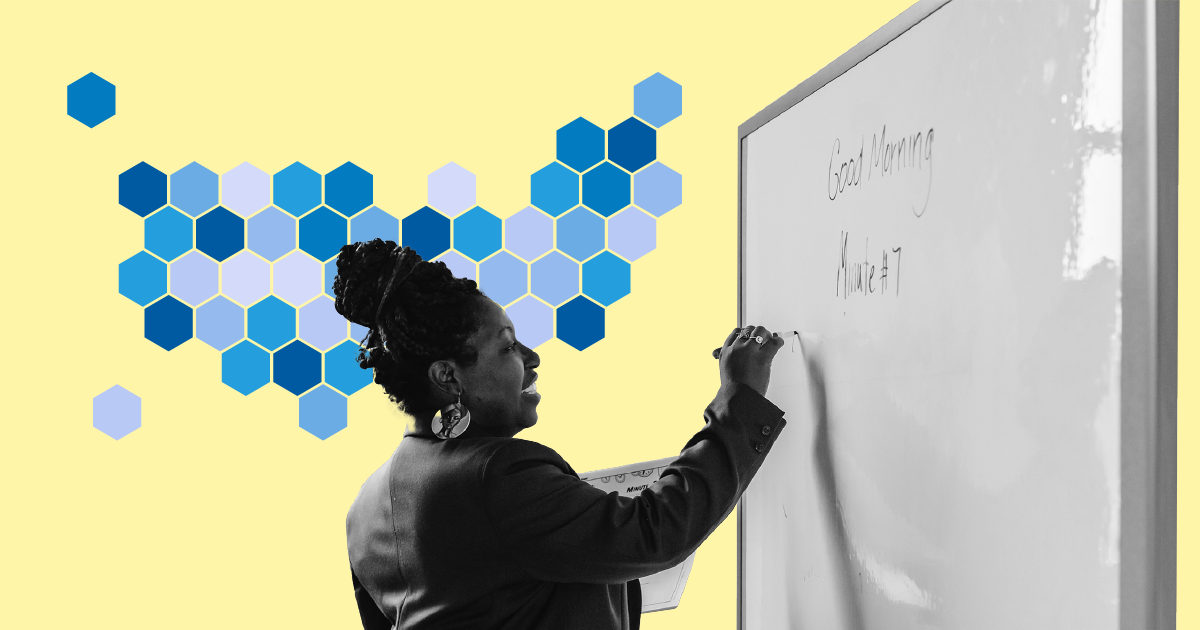Education
Which states pay teachers the most and least?

There are many reasons Americans can start to feel anxious about the economy. Mass layoffs, particularly in high-profile industries, add uncertainty to everyone’s working lives. Consumers tend to pull back on spending if their wages aren’t rising or costs are increasing.
Some people use an informal measure to say the economy is in a recession: when gross domestic product (GDP), or the economy’s output, declines for two fiscal quarters in a row. But while these things tend to go hand in hand, that’s not an official designation.
There is only one official way to call a recession. That’s up to a committee of experts at the National Bureau of Economic Research (NBER), a private, nonprofit research organization. The committee considers a wide range of economy-wide, monthly data points, including GDP, how many people are employed, how much personal income Americans have, retail sales, and industrial production. The NBER views GDP as “the single best measure,” but it’s not the only factor that it looks at.
The committee calls a recession once there is a significant decline across these measures for more than a few months. The NBER’s official designation of a recession, then, doesn’t happen until many months after it’s over, allowing it to be sure both that a recession happened and when exactly it started. In other words, the NBER looks backward, not at the present moment.
The US has gone through 34 recessions since 1857. Thirteen of those occurred after World War II.
From 1857 to 2020, recessions lasted an average of 17 months. In the 20th and 21st centuries, the average recession length decreased to 14 months.
The longest recession lasted 65 months, from October 1873 to March 1879. The Great Recession officially began in December 2007 and ended June 2009, lasting 18 months, the longest of the post-war period. The shortest recession occurred during the Covid-19 pandemic, which lasted just two months, from February 2020 to April 2020.
Economic expansions take place any time the economy isn’t in a recession. Before the 1900s, the average expansion lasted an average of 41.4 months. In the 20th and 21st centuries, the average increased to 48 months. In other words, in the 20th and 21st centuries, economic expansions lasted longer, and recessions were shorter.
Prior to the 2020 recession, the economy’s expansion lasted 128 months, the longest economic expansion in recent history.
Annual declines in personal income excluding government transfers—one of the measures the NBER places significant weight on—occurred during 11 of the 15 recessions since 1930, the earliest data available.There were no annual losses in personal income for the recessions of 1960–1961, 1969–1970, 1981–1982, and 2001.
During the 2020 recession, personal income dropped 0.5% compared with 2019, and during the height of the pandemic it dropped 5.6% in one month, the largest monthly decrease of the period. But the largest monthly decrease in personal income occurred from December 2012 to January 2013 even though the economy was not officially in a recession at the time.
Annual declines in nonfarm employment — another measure the NBER pays close attention to —occurred during 10 of the 13 recessions since World War II.There were no annual losses in employment during the recessions of 1969–1970 and 1980. Employment declines came two years after the 2001 recession had already ended.
During the 2020 recession, employment decreased 13.6% from March to April, the biggest drop in employment since 1939, when data was first collected. Employment steadily increased after that low mark and had reached pre-pandemic levels by June 2022.
Get more economic updates from USAFacts, and get the latest data by signing up for our newsletter.
Newsletter
Keep up with the latest data and most popular content.